What Final Fantasy VII Remake (FF7R) is Not
Ironically, given the “Remake” moniker in its title, Final Fantasy VII Remake (FF7R) is not a remake. In the game industry it is understood that a “remake” is the delivery of what is basically the same title that we received years, and some times decades before with a new coat of paint. We have countless of examples to point to in this regard.
Games such as The Legend of Zelda: Ocarina of Time 3D, the Resident Evil 2 Remake, Shadow of the Colossus, amongst many others are exemplary cases that we can point to as to what is expected of a Video Game Remake. Basically, a remake is expected to be the same game story wise, with some additions to the story, but nothing that breaks away from the original source material, and in most cases remakes feature a major graphical overhaul.
Final Fantasy VII Remake, apart from featuring the mandatory graphical overhaul, effectively changes the story in a major way. It is conscious about doing these changes. But the game is not a reboot either. FFVIIR acknowledges right from the get go, that the original story did take place, and that the new adventure is taking place in an alternate timeline.
What Final Fantasy VII Remake (FF7R) Actually is…
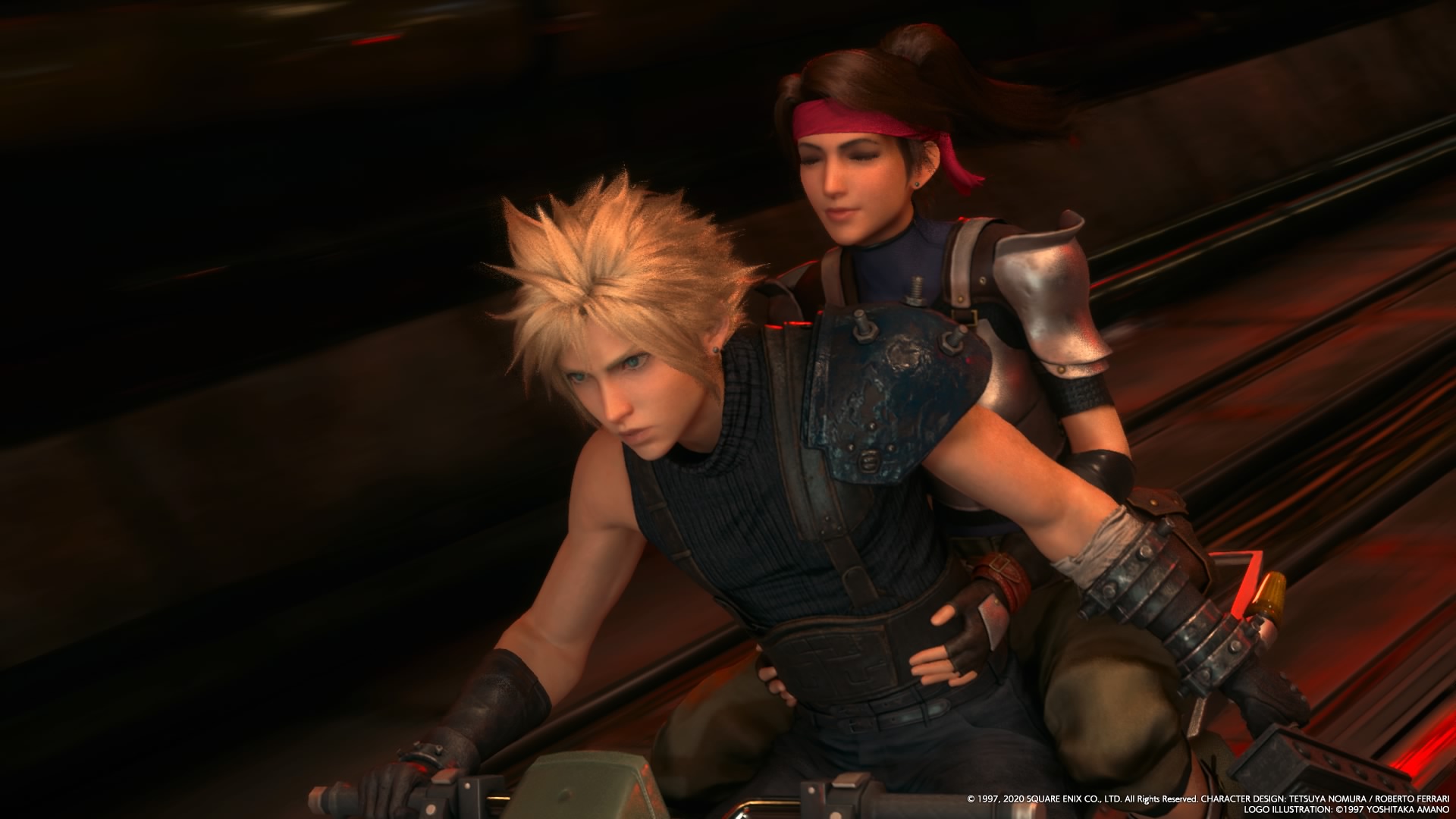
FFVIIR is a full blown sequel. The game is ‘Final Fantasy VII-2’ if we utilize Square Enix’s usual procedure of labeling main entry sequels in its Final Fantasy franchise. The ‘Remake’ moniker in its title was used mainly for marketing purposes.
Millions of Final Fantasy VII fans had been clamoring for an actual remake for more than a decade (since that fateful PlayStation 3 tech demo), and Square Enix cleverly utilized that fan fervor in its favor.
Once I got past the fact that the game is really a sequel, and not an attempt at the de-canonization of the original’s beloved plot line, I was able to stomach – and even enjoy – some of Final Fantasy VII Remake’s most absurd story telling decisions.
A Nostalgia Filled Trip
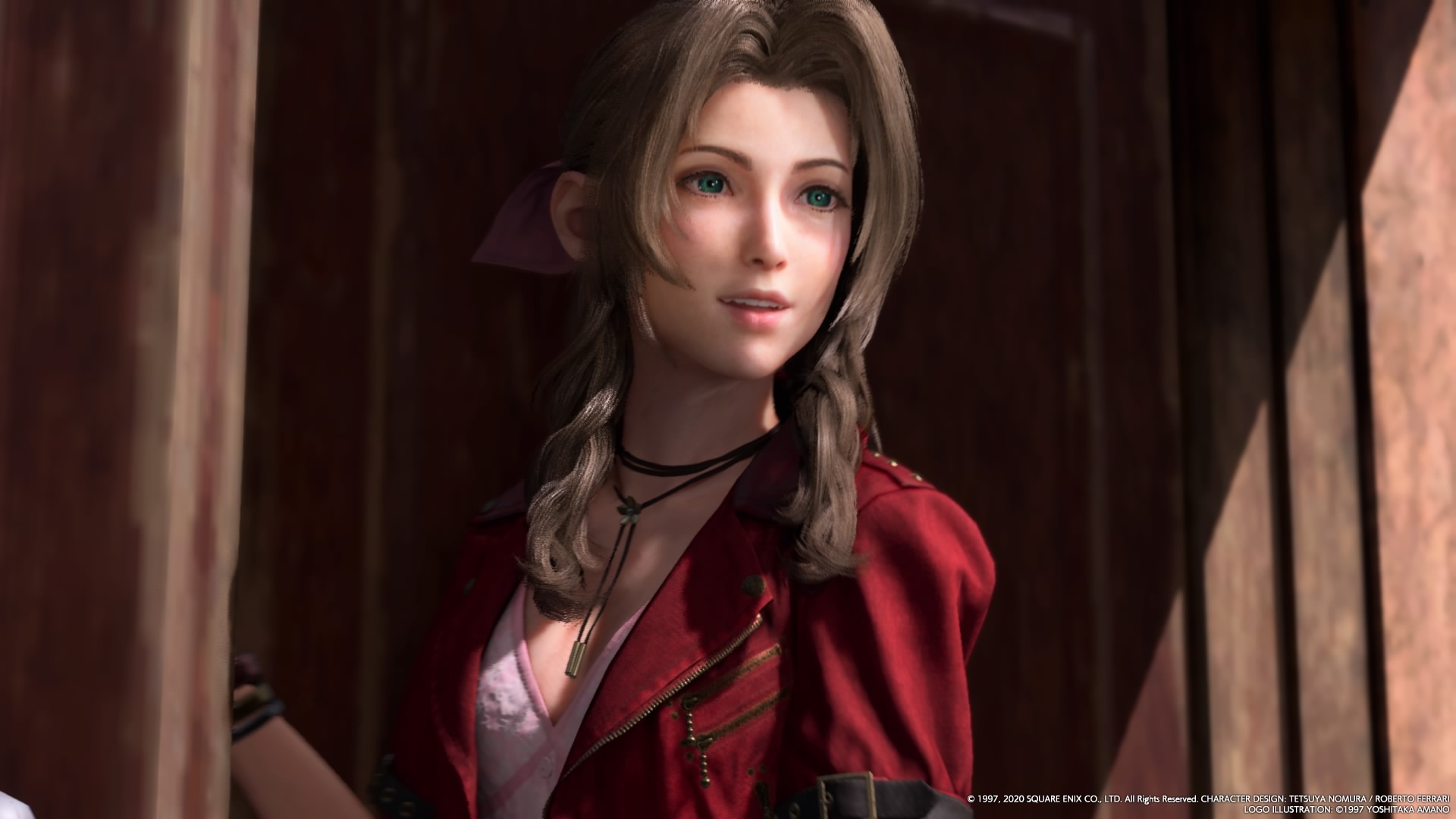
The one thing that Final Fantasy VII Remake does incredibly well, if not perfectly, is the combination of its art, graphics and powerful musical score in order to transport long time players back to 1997 with a nostalgia driven re-imagination of Midgar.
Quite simply, Nomura (for all of the hardships that I have given him) succeeded in making me feel 14 years old again at certain moments in the game.
That statement is the game’s strongest selling point to old time fans, and the highest praise that I can give it. Final Fantasy VII Remake certainly has flaws. It is not nearly as good, or as complete a game as Final Fantasy VII was in 1997. But its sins in story telling, its –at times –mediocre environmental visuals, and its generic action based combat can be overlooked, and–mostly–forgiven because ‘Nostalgia’ is a powerful weapon, and FFVIIR utilizes it at will.
Uematsu’s Music is as Brilliant as Ever
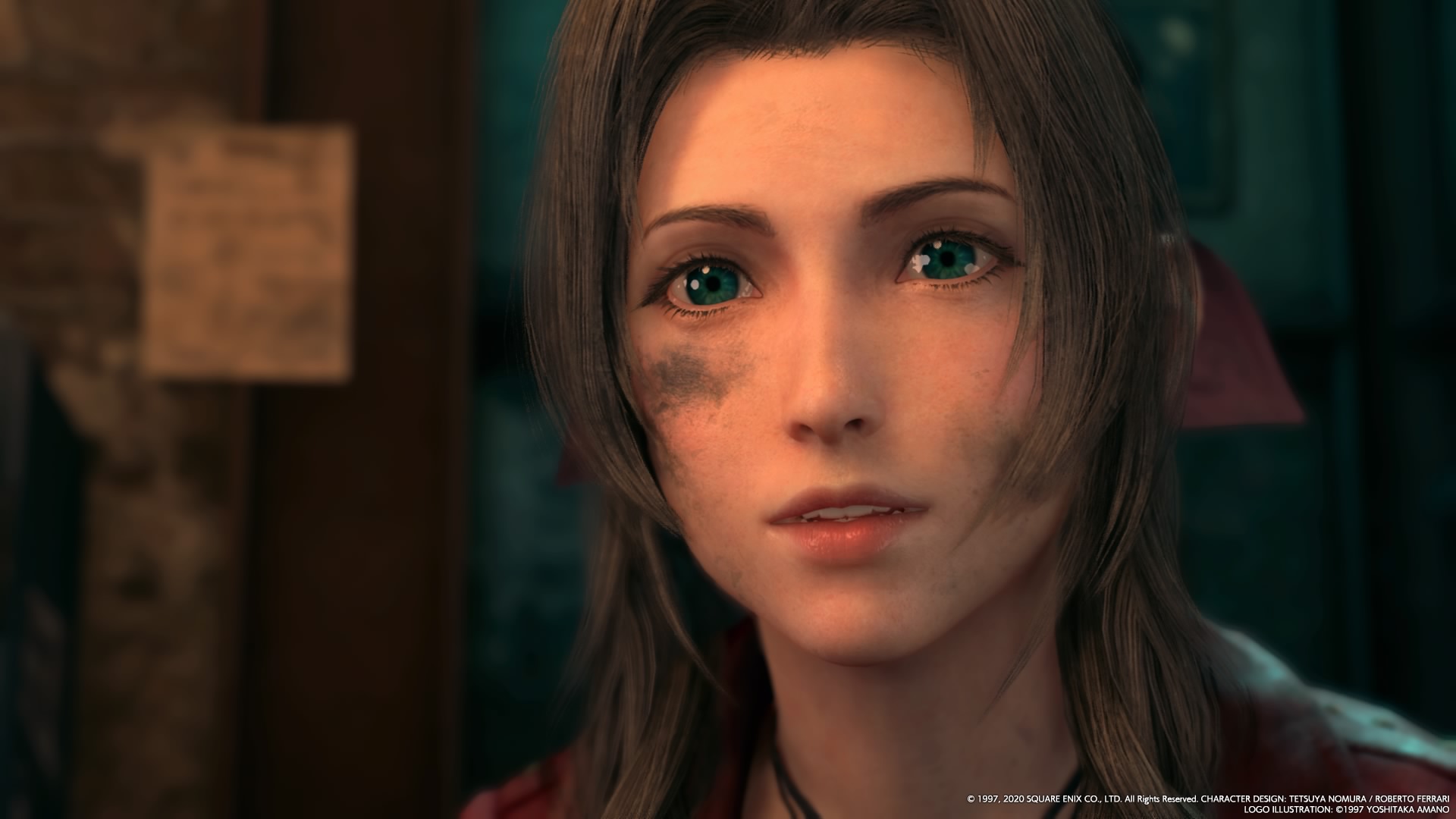
I miss 90’s video game music. Perhaps, I should say that I miss the style of musical composition utilized by Japanese composers in that era. Given the technical limitations of sound chips, composers like Nobuo Uematsu were forced to create strong melodies. I can’t recall a single melody of the last modern game that I played. Yet, I can still hum, and vocalize almost every melody from Final Fantasy VII 23 odd years later.
Final Fantasy VII Remake, modernizes all of Uematsu’s score with fully orchestrated versions of his FFVII compositions. Masashi Hamauzu, and Mitsuto Suzuki were tasked with the soundtrack for this Remake/Sequel, and they have done a spectacular job in respecting Uematsu’s work, and unearthing his brilliance for modern (and older) audiences to appreciate.
I used to swear that FFVI had the best soundtrack in the series, and FFVIIR has made me reconsider my stance on that account. The music here is quite brilliant, and I am not purely talking through nostalgic tinted lenses here. The music is just flawless.
That said, yes, the music did aid FFVIIR in gripping me with nostalgic feelings. I was able to turn my mind back to my 13-14 year old days again thanks to the soundtrack.
It is impossible not to think back to 1997 when playing Final Fantasy VIIR. This is both, a resounding triumph for Kitase, and Nomura in their mission to “revive” the mood of the original, and ironically, one of the reasons why I disliked some parts of the game.
Final Fantasy VIIR by design and fate can’t get away from under the original’s shadow. It is the game’s biggest strength, and at least for old timers like me, also its biggest weakness. Quite simply, some of the narrative choices made by the Nomura and Nojima do not make sense within the original canon, even when taking into account that Final Fantasy VII Remake is in fact a sequel.
Editor’s note: The next sections will discuss topics, and characters from a perspective of someone who played the original. Consequently, the following paragraphs will feature major spoilers. If you don’t want to read the spoilers scroll down until you reach the next bolded italic text box.
A Girl Named Jessie
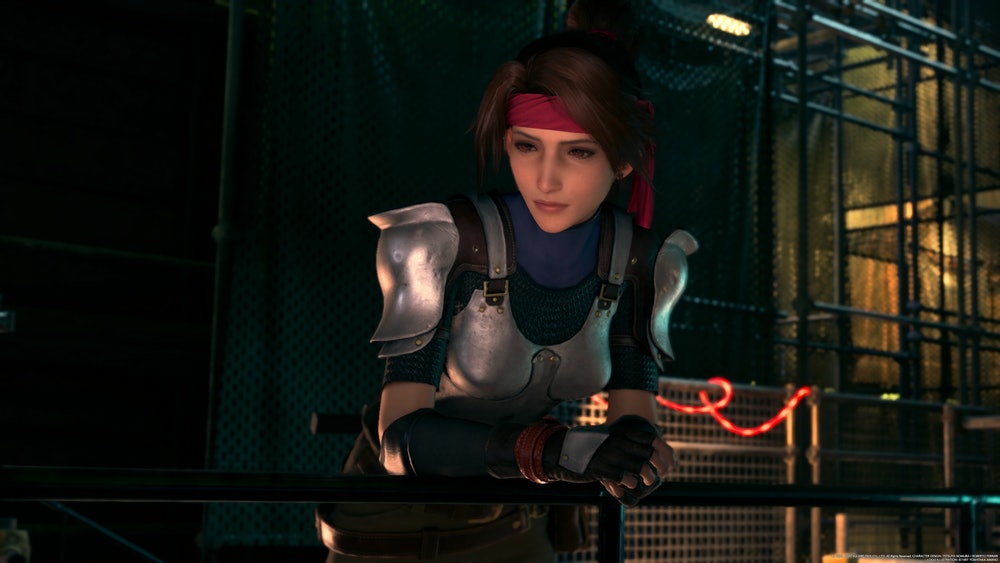
Not all of the narrative choices made by Nomura, and Nojima are bad. So, let’s start with the good: Jessie’s new found protagonist role is one of the greatest things that could have happened to Final Fantasy VII.
In the original game, Cloud’s story was set up to have two love interests: Tifa, and Aeris/Aerith. It was a conscious choice made by Sakaguchi and Kitase. In fact, depending on some of your actions you could either go on date with Tifa, or Aerith (I always ended up dating Aerith).
Final Fantasy VII Remake further complicates matters as Jessie, who once was relegated to a minor NPC comrade, is now a full blown romantic interest for our blonde haired hero.
Tifa used to be the ‘Girl Next Door’ type of beauty in the first game, and she was, literally, Cloud’s next door neighbor during his childhood, and early years of adolescence. Aerith, on the other hand, was designed as the ethereal beauty, that Cloud meets in a “destined to be moment” during his Midgar mercenary stint.
Aerith, with her big green eyes, and angelical features remains that ethereal, if almost larger than life love interest, and Tifa remains what she always was. Jessie, however, smashes that love triangle set up, turning the plot –in its romantic moments–into a love “rectangle” of sorts.
Jessie always liked Cloud, even in the original game, but she never got much screen time. That changes here, as Nomura, and Nojima gave her a beautiful character model, and a ‘Co-Star’ treatment that makes her just as important to Cloud–as the other two females–during FFVIIR’s run time.
Jessie is lively, upbeat, and is constantly teasing, and flirting with Cloud. Jessie is the embodiment of a youthful love/crush before running into Aerith, who also utilizes a similar approach towards her courting of our blonde protagonist.
I have always believed that Tetsuya Nomura would be better served drawing, and directing cinematic cut-scenes rather than directing games. The man for all of his “legend” has never really directed anything with a story that made sense in a logical way (see the Kingdom Heart Series).
Nomura is a creative entity that needs to be reigned in by a more conservative leader. This is why Final Fantasy 6-10 are generally regarded as the best games in the series. Nomura as a character designer had an influence in Final Fantasy VII, but it seems that Sakaguchi kept him on a leash for the overall game’s good.
In Final Fantasy VII Remake, Nomura is free from the shackles of his former mentor, and his imagination has been left unchecked for the most part. In some ways, Final Fantasy VII Remake is more a sequel to Crisis Core (and the awful Sakaguchi-less FFVII Compilation) than it is to Final Fantasy VII itself.
A lot of the characterization given to our heroes during the compilation makes its way here. I have a few complaints about the incongruences of FFVIIR with the original story, but I will discuss them further down in this analysis.
The one unquestionably good thing that I can say about FFVIIR’s narrative is that Nomura and Nojima wrote Jessie as Cloud’s tragic love interest to near perfection.
I was always an Aerith guy. I never really liked Tifa much. I didn’t like her much after the original, and perhaps even less after the compilation. But now, Jessie at least for me, became Aerith’s main rival for Cloud’s affection. I found her a more charming character than FFVII’s busty beauty. The fact that I knew that Jessie’s fate would be a tragic one, only helped to endear her character to me in an even greater way.
Jessie stole Tifa’s “Girl next door” appeal right from the get go with her beautiful character design. To top it off, her writing was more much more entertaining than Tifa’s own.
In the end, she did have her tragic moment, and it was surprisingly touching. Jessie’s character development in FFVIIR is one of the game’s brightest spots.
It showed that Nomura and Nojima can get certain things in character development right even the in midst of mounting evidence to the contrary.
A Girl Named Tifa
Tifa, as in the original game, works in her 7th Heaven Bar. The bar is located in the heart of the Sector 7 slums. Her character arc in the early stages of the game plays out exactly as anyone who played the original game would expect. She is protective of Cloud, knows that something is amiss with him, but stays quiet. Her character has been fleshed out with more dialog, but she is still the same girl (mostly) that she was in the first game, and in Advent Children.
If you liked Tifa in Final Fantasy VII, then you are likely to like her now. Nomura does a good job in the balancing act between Tifa’s and Jessie’s (and later on Aerith’s) relationship with Cloud. The game doesn’t favor one girl over the other in that sense. The player now has a little more control depending on choices made throughout the game in regards to which girl (Aerith or Tifa) Cloud has more affinity with.
But Tifa remains that girl that unconditionally loves Cloud, even if she is a bit bland (both in personality and appearance) in contrast to the angelical Aerith.
A Director Named Nomura, and a Writer Named Nojima
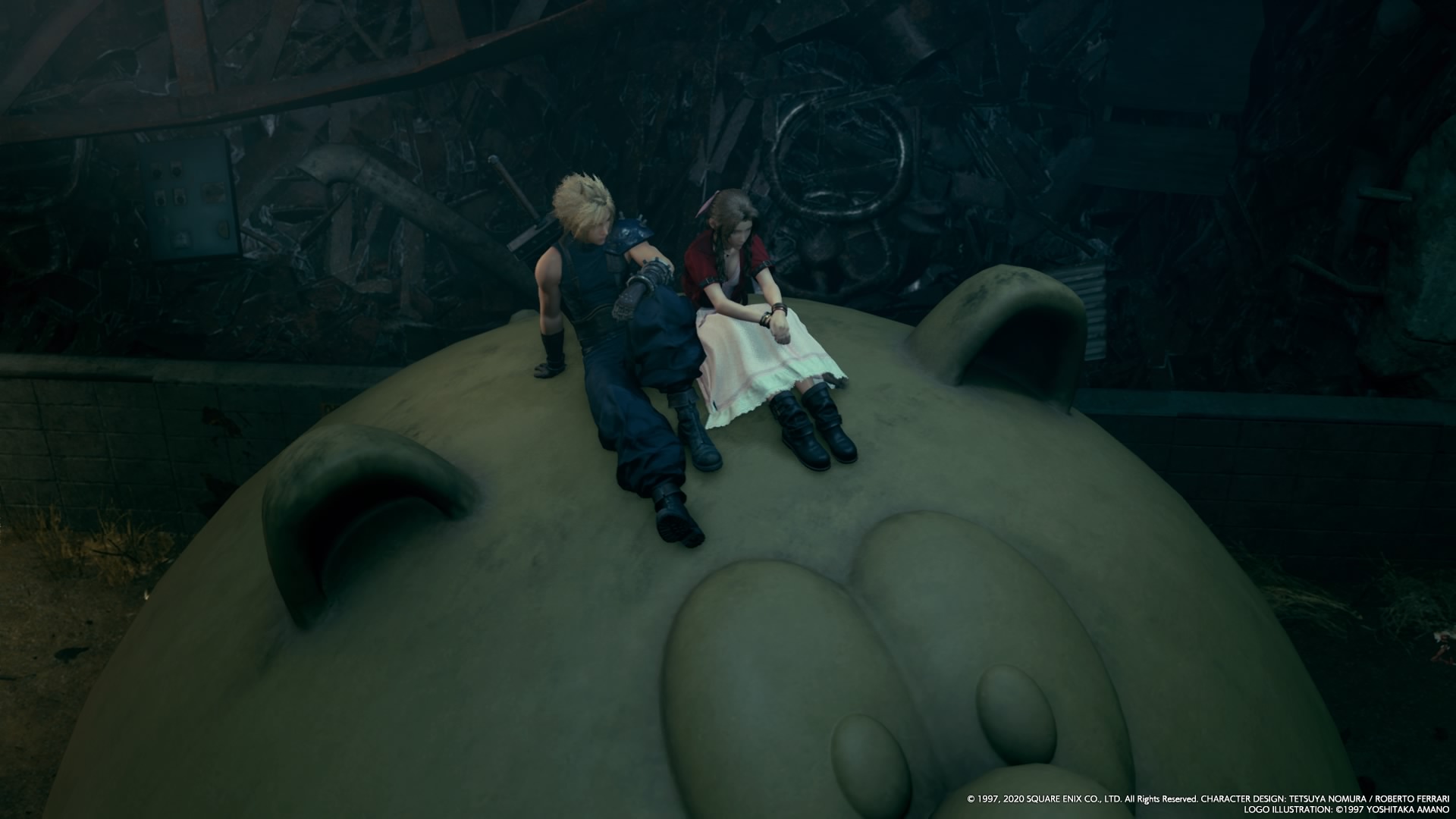
Before diving into Aerith’s character, Tetsuya Nomura needs to be brought into the forefront of this analysis.
Here is what Nomura does extremely well: He can draw incredible characters, and he seems to have knack for directing cool looking (if over the top) action scenes. These two talents have carried his games (and film in Advent Children) into successful ventures as an abundance of flash has helped to mask the lack of substance that his direction brings to the table in other important areas.
Final Fantasy VII Remake is no different from his (and Nojima’s) Kingdom Hearts series, and to a lesser degree (this one was more on Nojima) Crisis Core. It is a decent to good game, that can pass for a “very good” one thanks to the audio/visual spectacle that consistently graces the screen.
Kazushige Nojima, a renowned scenario writer, has been involved with the FF series since FFVII where he was supervised by Kitase and Sakaguchi.
Like Nomura, it seems that Nojima needs a guiding hand in order for his storytelling to remain within the realm of the ‘rational’. His best works have him sharing co-writing credits (FFVII, FFX, KH1), and his more irrational stories have him as the solo–or lead–scenario writer (FFVIII, KH2, Crisis Core).
Before some of you point out that Crisis Core was a “good game”, I will concur that it was, but it also had Genesis. Genesis was a weird, flamboyant, and to be blunt, ridiculous villain that in my opinion had no place in Final Fantasy VII’s dark and gritty universe.
His impact in Crisis Core was too significant for him to be a non-existent entity in the original game. Nojima pulled him out of his rear end in order to inject more of his influence in FFVII’s lore, regardless of the fact that Genesis’ existence could never fit within the original canon.
I have a feeling that maybe under Sakaguchi’s watch things would have turned out differently, but alas, he was gone by the time that the FFVII compilation began to make its rounds.
The point that I want to stress is that Nomura and Nojima when working together are prone to creating strange plot devices that can’t be rationally explained. Final Fantasy VII Remake is their most recent example of this.
A Man Named Zack
Within the original canon, Zack Fair was an afterthought. Zack’s only purpose in the story was to provide Cloud with an interesting and mysterious back story. Aerith’s first love was meant to be Sephiroth (which made sense within a certain context), but Aerith’s initial connection to Cloud needed to be explained, and Zack fit the bill.
The dark haired SOLDIER was a Nojima creation, and as such he would be given a protagonist role in the compilation (Crisis Core). I had no issues with Zack getting his own game. The original game made it clear that Zack was a first class SOLDIER, and Cloud was just a regular infantry grunt before the events of Final Fantasy VII.
Their military status notwithstanding, Zack would face, and consequently get his rearend handed to him by a recently turned insane Sephiroth at Nibelheim’s reactor. Cloud, on the other hand, would in fact prove to be the superior warrior by downing that very same Sephiroth moments later.
Both Cloud, and Zack would end up captured, and experimented on by Hojo before Zack managed to escape their confinement while carrying a comatose (Mako poisoned) Cloud in an ill fated escape attempt towards Midgar. Once in Midgar’s borders the two comrades are found by Shinra, and Zack is unceremoniously shot down by two grunts and a Shinra officer.
That is the extent of Zack’s involvement in the game. Cloud would survive and wake up more less being himself, but also mixing up some of Zack’s traits and memories with his own. Cloud picked up these memories when his ill-fated SOLDIER comrade told him stories about his own life during his comatose state.
Crisis Core, apart from introducing Genesis, also gave Zack a prominent role, and a ridiculous over the top death. In true Nomura style he would go down in blaze of glory fighting a literal army of Shinra Infantry men. Zack’s death was cool, but at the same time it was a stark contrast to his gritty, and empty death in the original game.
Zack was unceremoniously shot down, and left to die a cold death on the desert floor. Dying like that isn’t a glorious event, and Final Fantasy VII made that point clear in 1997.
Crisis Core was a good game, but it could be said that it was the one important title that signaled the fact that Nomura, and Nojima were willing to take extreme liberties when working on a FFVII related game, even if these liberties had strong inconsistency issues with the original game’s canon.
Where Final Fantasy VII Remake Goes South
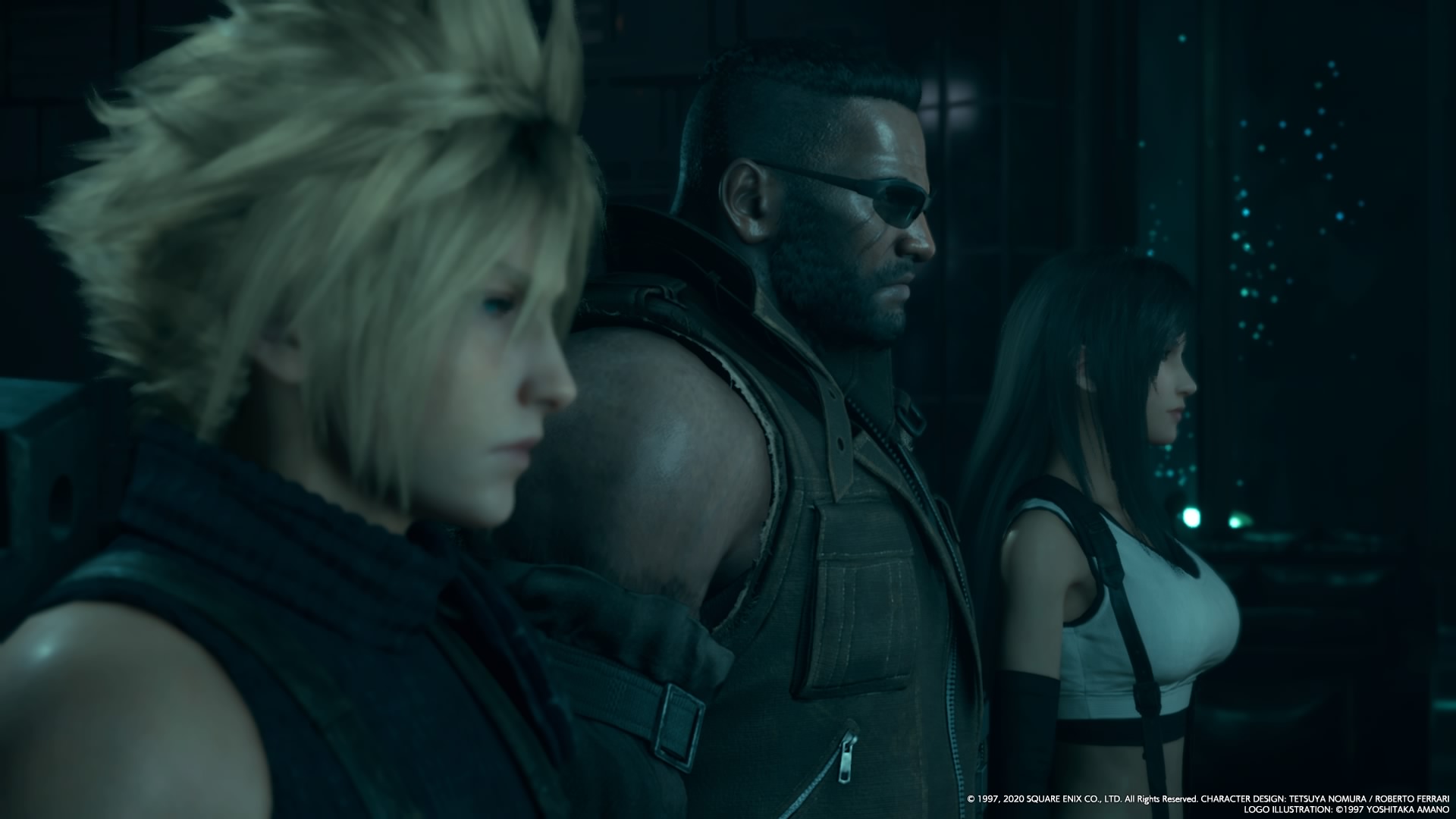
Where to start? How about the ‘Whispers’. It seems that Square Enix decided that a sequel that followed the original’s story outline so that it could be marketed as a ‘Remake’, was an easier path to take, as opposed to a full blown faithful remake. The perfect way to do this was by introducing a parallel/or alternate timeline that featured the same iconic cast.
Here is where things get tricky for FFVIIR. Alternate timelines rarely–if ever–make sense. As anyone that has played any Kingdom Hearts game beyond the first one will know, Nojima and Nomura are perfectly capable of creating a convoluted mess that is devoid of any rational explanation. ‘Making sense’ has never been that duo’s calling card. Thus, Final Fantasy VII Remake–in the context of the original canon–does not make sense.
The existence of the ‘Whispers’ alone sends the story into the realm of irrationality. The ‘Whispers’ can’t really be explained by logical means. It is never explained how Sephiroth, and Aeris knew about them, and more importantly, the events of the previous timeline (the original game). It is never explained why the ‘Whispers’ make an appearance in the first place.
Yes, they are there to make sure that the events of the first game happen as they were always meant to happen, but where did the divergence occur? What caused them to appear? The original never hinted at alternate realities, and timelines, why is it occurring now? How can you fight “fate” personified? I could keep asking questions, and there would be no rational explanation for most, if any of them.
I did not care when Nojima did this to Kingdom Hearts. The premise of running around alongside Donald Duck, and Goofy fighting the heartless was nonsensical in itself, but Final Fantasy VII was a different beast. The original Final Fantasy VII made sense. It is the reason why its story was universally praised in 1997, and it is the reason why the game inspired more fan fiction writers than any game before or since.
Even the most fantastical aspects of the game–the Weapons for example–could be explained. Like Godzilla, the Planet when threatened would awake weapons to defend itself. The planet talked to the Ancients (Cetra), so it was a living and sentient entity. It (the Godzilla like Weapon creation) wasn’t a farfetched explanation within the game’s universe. Jenova, as an alien entity wasn’t an irrational story element either.
Sephiroth’s–and to an extent Cloud’s–beyond human abilities were the result of genetic experimentation with Jenova’s cells, and Mako. See? Things could be explained in a rational manner.
Final Fantasy VII featured a Science Fiction/Fantasy plot that was deep, but easy to follow and understand. By contrast, Final Fantasy VII Remake’s story falls within the same literary genres, but it is difficult to understand why things have changed in the way that they have in large part thanks to the fact that the ‘Whispers’ feel out of place within FFVII’s universe.
Even within the mindset that FFVIIR is a sequel that takes place in an alternate timeline, it is hard for me to praise the overall storyline here. The ending of the game itself strongly suggests the existence of a third timeline, and if we read deeper into it, perhaps the existence of a near infinite amount of timelines.
This won’t be a problem if the subsequent episodes focus on the timeline that I just played, but knowing Nomura and Kojima, I fear for the worst. The worst case scenario would be that FFVIIR-2’s story ends up pushing the timelines to converge, and Zack eventually arrives to join the party.
If Zack lives, then there is no Final Fantasy VII, this is something that just cannot be reconciled with the story even within FFVIIR’s already irrational context.
A Girl Named Aerith, and a Villain Named Sephiroth
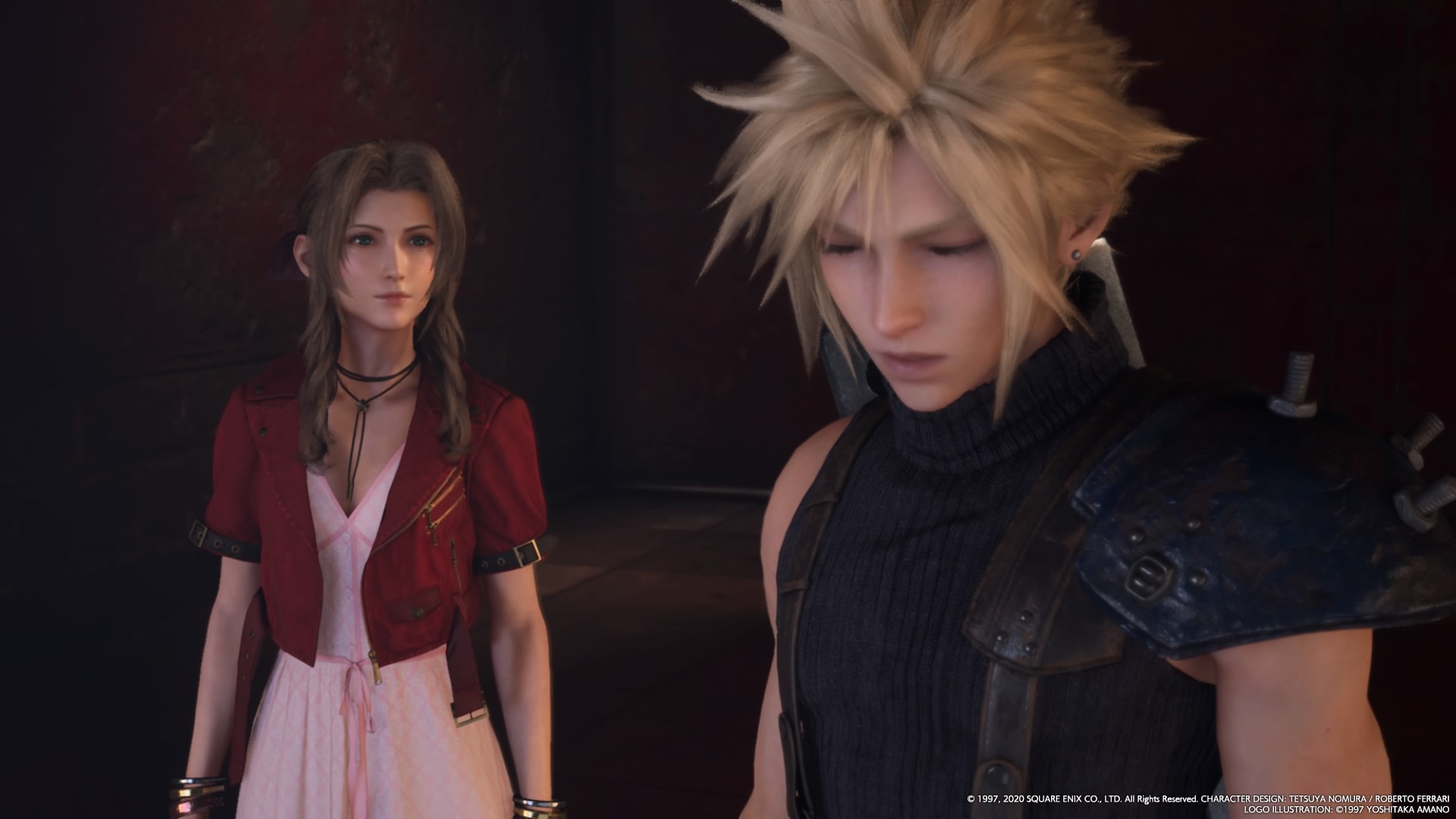
The two iconic characters have to go jointly under the same discussion, because they seem to be the only ones that appear to have a clue about what is going on in regards to the previous (OG FFVII) timeline, and the ‘Whispers’. Shockingly, both characters know of these things right from the get go.
Aerith seems to be quietly calling out for Cloud’s help, while Sephiroth appears content, and even pleased with the situation . Aerith’s predicament is easy to understand: she doesn’t want to die. Sephiroth on his part doesn’t want to be defeated, but actually seems to be in perfect control of the events that surround him.
The above paragraphs pretty much throw two strikes at FFVIIR’s storyline. Sephiroth is no longer the mysterious, and feared force that he was in Final Fantasy VII. His presence is revealed to the player within the first hour, and thus, one of the driving forces of the original game’s story is shattered here.
Sephiroth remains a cool character, but the aura of mystery that surrounded him in the first game (where he only made a quick first appearance in Shinra’s building) is gone. He keeps appearing throughout the story to poor delusional Cloud, and–somehow (his clone)–is the final boss in the game.
FFVIIR Might Have Been Planned Originally as a Stand-Alone Game…
Aerith and Sephiroth taking center stage during the Midgar session is not the only reason why I think that this was the case. Other important plot points are revealed during Midgar’s play through. Plot moments that should have been revealed while in Cosmo Canyon are unveiled in Midgar’s Shinra Building. Hojo himself plays a secondary villain role during this game, even though his involvement during Midgar’s phase was kept to a minimum in the original story.
Glimpses of Sephiroth’s fateful Meteor, and Aerith’s tragic murder at his hand are present in the game. In other words, FFVIIR manages to unveil almost every important FFVII plot detail before our cast of heroes ever sets foot outside of Midgar.
I have no idea what will happen in the second episode of this “Remake” series, but a fresh story with these characters seems to be Square Enix’s intention with the new games.
The dark tone of the original game has lightened up…
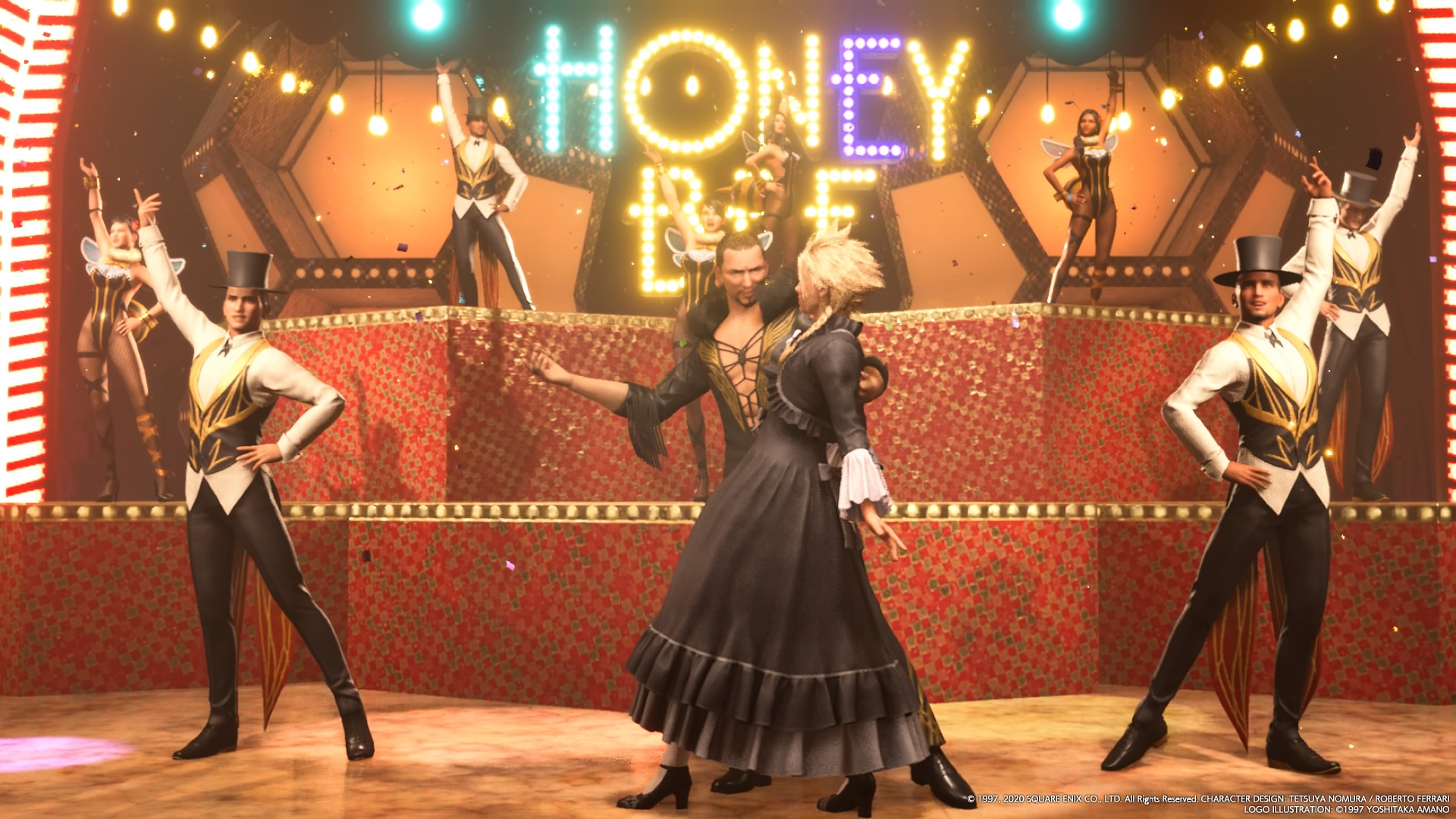
Ironically, while Final Fantasy VII Remake looks worlds more realistic than its 23 year old predecessor, other aspects of it are more fantastical now. Its themes, characters, and the overall tone of the story have lost some of their grittier edge.
For starters, the ‘Eco Terrorist’ group Avalanche no longer truly fits the ‘terrorist’ description. Barret and company are now pretty mild. In Final Fantasy VII, Jessie crafted a bomb that took out Mako reactor 1. The bomb killed every military, and working personnel at the reactor at the time. The explosion was so powerful that it took out a few residential areas, thus killing innocent civilians in the name of “Saving the Planet”.
The first game makes the implications of these actions clear. Jessie, Biggs, Wedge, and Barret knew that what they were doing was wrong. It was implied that they were losing something of themselves (humanity perhaps?) in order to carry on with their idealistic planet saving crusade.
Things change in Final Fantasy VII Remake, and perhaps the unknown (Nomura/Nojima) disruption that caused the ‘Whispers’ to appear is at fault. Avalanche does not blow up Mako Reactor 1. Jessie’s bomb only causes a small explosion that damages a few small components in the reactor. Instead, Shinra is the culprit of the reactor’s destruction, as it blew it up in order to blame the ‘innocent’ Avalanche souls for the tragic attack.
This is the first inconsistency (or plot hole) that is created by Final Fantasy VII Remake. The first in what turns out to be a long line of transgressions made against the original canon.
Jessie’s ‘whimpering’ bomb makes no sense. Why would Avalanche go through the trouble of storming a heavily guarded reactor, filled with military personnel, endangering their own lives in order to only destroy a few components that would have been repaired within a week–if not the very next day–thus rendering their herculean efforts to help the planet (by destroying the reactor) irrelevant?
Barret and company are made to look like idiots by Square Enix here. Not only that, but if Shinra knew right from the get go that they–Avalanche–were there, and it was within their power to blow up the reactor, why not just blow it up with Barret, and company inside of it? They would have killed two birds with one stone. They would have destroyed a dangerous ‘radical’ cell of Avalanche, and at the same time the Shinra propaganda machine could still frame the group for the explosion. Remember, the dead can’t speak up.
So, in FFVIIR’s universe the destruction of Mako Reactor 1 was a result of two very boneheaded if irrational moves by two opposing factions. Avalanche, by risking life, and limb to render a reactor non operational for only few days, and Shinra by destroying a multi-billion Gil piece of machinery only to let a potentially dangerous group escape unscathed from the event.
Perhaps, I am overthinking this early game scenario, and I should just move on. The entire plot is full of irrationalities and dwelling deeply into its issues could easily turn into a maddening exercise. But it has to be mentioned: The original’s plot was a much better thought out piece of literature.
There are plenty of inconsistencies in the game. Barret’s face off with President Shinra is one. Barret uncharacteristically saves the President from a certain demise. That sentence alone should have fans of the original game scratching their heads. Barret’s lives for two things in life: Taking care of Marlene, and second, the destruction of Shinra under the convenient “I am saving the planet” umbrella. In reality, Barret just wants revenge for the events that took place in Corel.
Needless to say, the entire scene ends up comically, with the president pointing a gun at Barret who in turn is surprisingly stunned and paralyzed by the action of the decrepit old man holding him at gun point. If Final Fantasy VII Remake was based on logical happenings, then one could say that Barret what was within his rights to freeze under the gun, as pretty much any human would fold the same way under similar circumstances.
Yet, after 25 hours of watching Barret take on scores of heavily armed military men, and machines, the image of old president Shinra gaining an upper hand on the hulking hero by way of a hand gun seemed ridiculous at best. Never mind the fact that President Shinra should have never been able to reach the handgun in the first place.
I could keep listing weird scenarios that kept happening all over the story, but I would have to make a book length article about it. My point here is that a lot of changes have been made to Final Fantasy VII’s storyline, and some work, but most drive what once was a dark, grim, and gritty J-RPG into the realm of the nonsensical.
Cloud? Is that you?
Cloud’s characterization is not bad. He is a more talkative fellow now, and plays the part of the cool headed (for the most part) mercenary well. He takes Jessie’s advances for granted, is more comfortable around Tifa, and pretends to be cooler than life itself around Aerith. His development is interesting to watch, and he has always been a great character.
That said, Tetsuya Nomura infamously wanted to turn FF VS XIII, or as it came to be known, FFXV into a musical. Yes, you read that right, a musical. Well, his fantasies came true – at least partially – in FFVIIR. The famous cross-dressing scene of the original Final Fantasy VII is greatly, and I mean greatly expanded upon here.
The original game always gave me the impression that Cloud was not happy at all with the cross-dressing stunt that he had to pull in order to save Tifa from Don Corneo’s dirty clutches. He did it because it was a necessary and that was that. Cloud was a SOLDIER–in his mind–a First Class one at that. In a real world comparison to current military forces he was the very best of Shinra’s “Delta Force”. Cloud is levels above what would be the regular Army/Marine infantry men that populated Shinra’s lower military ranks. Cloud was a certified bad-ass.
But imagine a world in which Cloud turns into a “Claudia” and at the same time into a master dancer worthy of a lead role in a Las Vegas Cabaret show. That world is called Final Fantasy VII Remake. I have no issues with the scene, and the rhythmic mini-game that it carries with it. Cloud turned into ‘Claudia’ for a spell in the fist game, and yet, “Dancing Cloud” doesn’t seem to fit the original character in my view despite this.
The Honey Bee Inn’s dancing session is one of the most flamboyant, and out of character scenes that I have ever seen within the Final Fantasy universe. Logic isn’t a big part of the game, as I already explained. Thus, the dancing scene might as well fit in with the rest of the illogical happenings within the game, even though it creates a bit of plot contraction for Cloud.
Cloud in FFVIIR, just like in Advent Children, has Goku like powers. He can fly around while fighting Sephiroth, slash buildings in a half with his iconic buster sword, and decimate scores of armed men, monsters, and machines. By that logic, he could have just busted into Don Corneo’s lair–easily–killing everyone on his way to save Tifa. But I get it! If Cloud had done this there would be no game.
So, he becomes a dancing master within the span of just a few minutes instead. Wall Market, is just another example on how FFVIIR doesn’t really take FFVII’s plotline as seriously as it should. Perhaps, the best way to approach FFVIIR as fan of the original is to embrace the illogical plot decisions and just go along with the flow.
I suspect Wall Market’s plot scenes were added in there to extend the game’s running time, and boy is FFVIIR full of senseless, and needless filler.
Not All is Lost
While FFVIIR’s Storyline is likely to never make complete sense,t he fact that events changed from the get go, kept me hooked on the game from the start, as I wanted to see where the story–good or bad–would go.
The biggest driving force that the game has is Cloud, Aerith, Tifa, Jessie, and Barret as characters. Not because the game does a good job in fleshing them out, but because I already loved these characters from the original game. The novelty of their more realistic design, and extended voice acted dialog made the game’s pedestrian, and other wise irrational story a surprisingly enjoyable mess.
The game sets up Zack Fair in an interesting way as he survives in another timeline, and Aerith seems to sense him. Unlike the original canon it seems that she hasn’t completely gotten over Cloud’s “big bro” mentor. Aerith in the first game makes it clear that she was interested in Cloud, and Zack was just a teenage crush of her past.
She is interested in Cloud in FFVIIR, but the game hints at a deeper–than previously thought–connection between her and Zack. So, in a weird, very weird way, Final Fantasy VII Remake succeeded in getting me interested in playing the upcoming Episode 2. The game towards the end turns into a near blank canvas for the characters to start again.
Did Jessie survive? Will I be able to choose between Aerith and Tifa? Does Aerith survive? Will Zack make an appearance? Is Cid finally going to Space? What will Sephiroth do? He can’t be thinking in summoning Meteor again, can he? It was already revealed that it (the meteor) was coming if the party didn’t defeat the arbiter of time, but they did. So it would be boring if Sephiroth decides to go for Meteor again.
So many questions are open now, because according to the game itself, Final Fantasy VIIR is the start of a new journey, free from the shackles of fate. So, in a nutshell, I highly disliked FFVIIR’s nonsensical story, but I still have a deep appreciation for the Final Fantasy VII’s characters, and I want to see how they end up in this alternate reality, even if its story is inferior to the original.
Editor’s note: End of Spoilers ********************************************************************************************
********************************************************************************************
********************************************************************************************
A Visual Mixed Bag
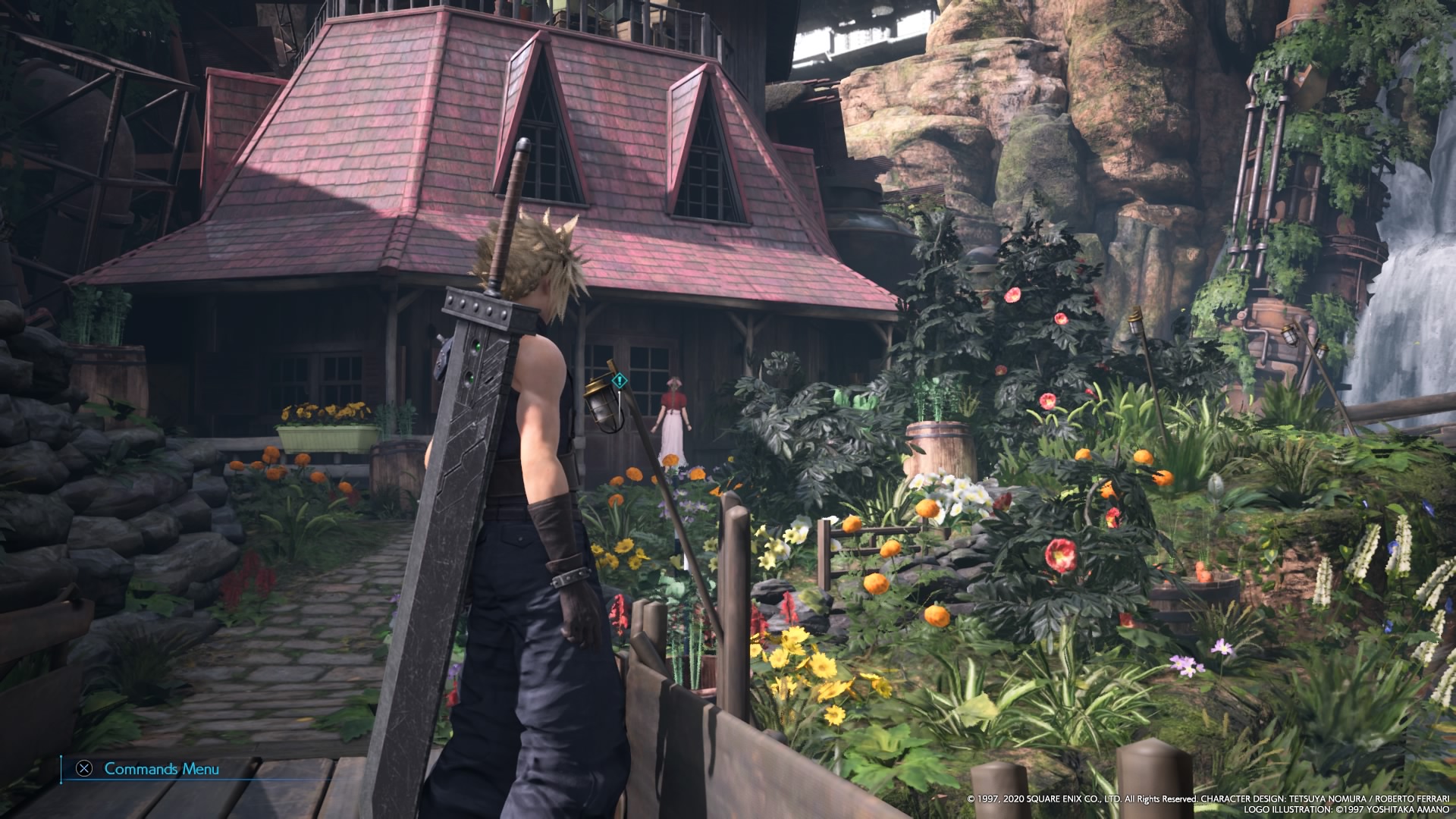
Do not be fooled by the wonderful character renderings, and the amazing artwork featured in FFVIIR. Visually, the game is a two-sided coin. On one hand it features what perhaps are the best character models seen within a Japanese RPG, and on the other, some of the worst texture work that you will see on environments in PS4/Xbox One generation games. The texture quality was strange, and at times jarring. Doors, crates, items in indoor areas and many walls have blurry low resolution textures on them.
The game does a good Job at conveying life in the slums. Unlike the first game, sunlight does pierce the plates (so there is daylight in the under plate living areas). This is a stark contrast from the imagery of the slums that the first game conveyed.
I didn’t mind the changes. The slums have a third world country ‘ghetto’ look to them, and it is clear that life under the plates is rough. There are a lot of metallic, and ‘rubble’ filled areas. Square Enix did a good job at conveying the look of the original here.
That said, the environments, despite being authentically loyal to the original work, look third-tier in comparison to similar PS4 games. The Order 1886, for example, looks much better even though it is a much older game.
Final Fantasy VII Remake is not an open world game. Most of the time, Cloud and Company are confined to hallways, tunnels, alleyways, and generally enclosed areas. There is no excuse for a game that had been in development for so long to have those blurry textures, and lack of micro detail.
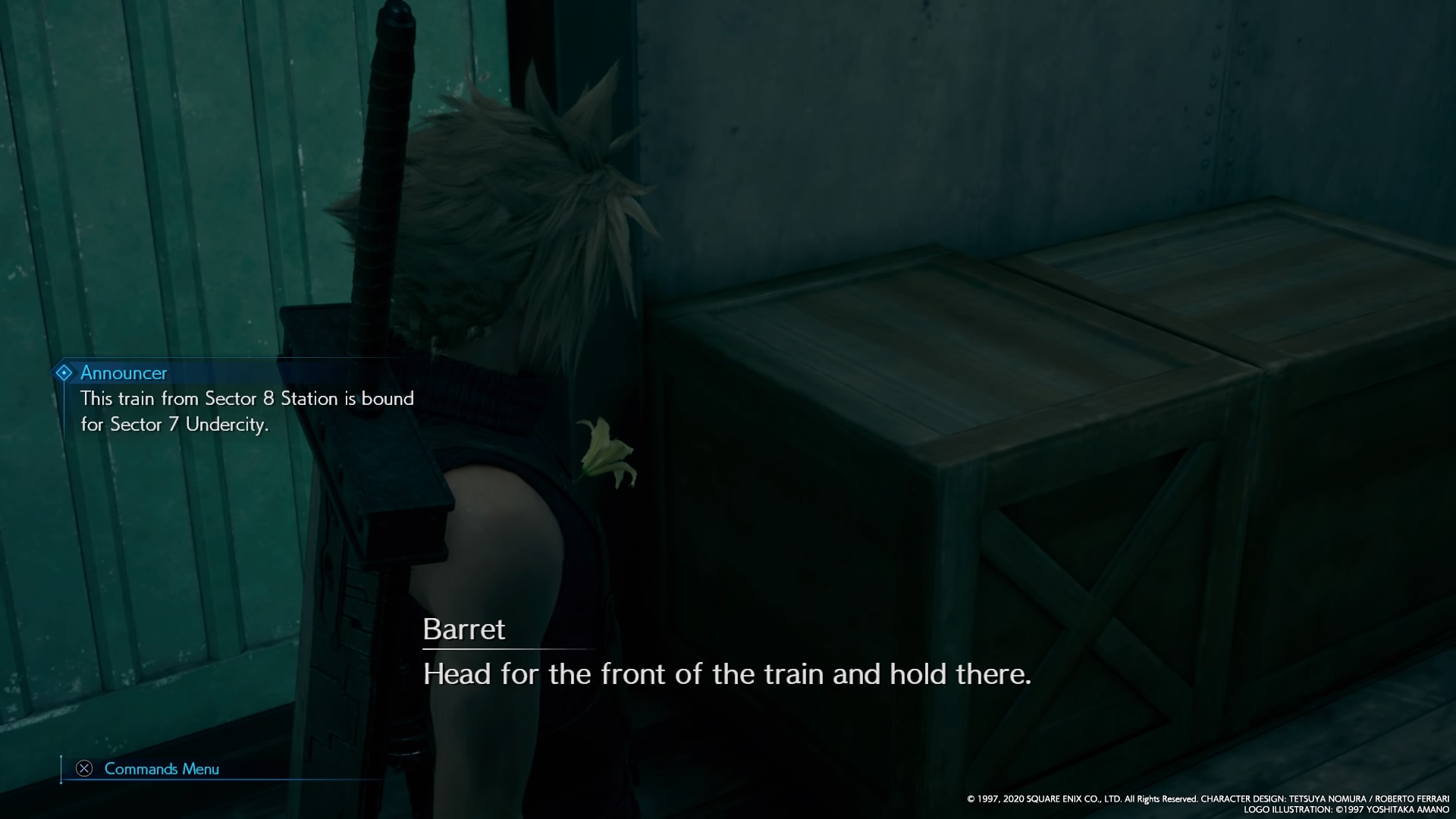
The best looking area in the game is perhaps Elmyra’s House, and this is due to the colorful, and more nature filled artwork that adorns the environment. Technically speaking, the game is far and away from God of War, and Naughty Dog’s brilliant visual efforts on the system.
Where FFVIIR shines is in the rendering of its character models. No, they are not up to par with any of Naughty Dog’s efforts either, but when compared to every single Japanese RPG that has arrived to our shores over the last decade, Final Fantasy VII Remake’s character models stand head and shoulders above them. FFXV is the only other game that can go toe to toe with it in this regard.
The skin shading is impressive, and Aerith looks as heavenly as I imagined her being 23 years ago when I watched her blocky polygonal character during gameplay.
In terms of creating realistic looking Anime characters FFVIIR sets a new standard. NPCs look okay as well, though I have two complaints. The first one is that most NPCs, and even some of the more important ones (shop owners, side quest NPCs, etc.) were modeled to look like normal humans. These NPCs have small eyes, and realistically proportioned bodies.
At times, Cloud and Party look off by contrast. Our cast members still have the larger than human eyes (Anime eyes), and the weird proportions of their original design. Barret is a hulking figure–no human can get that big–and Cloud’s arms are extremely odd looking.
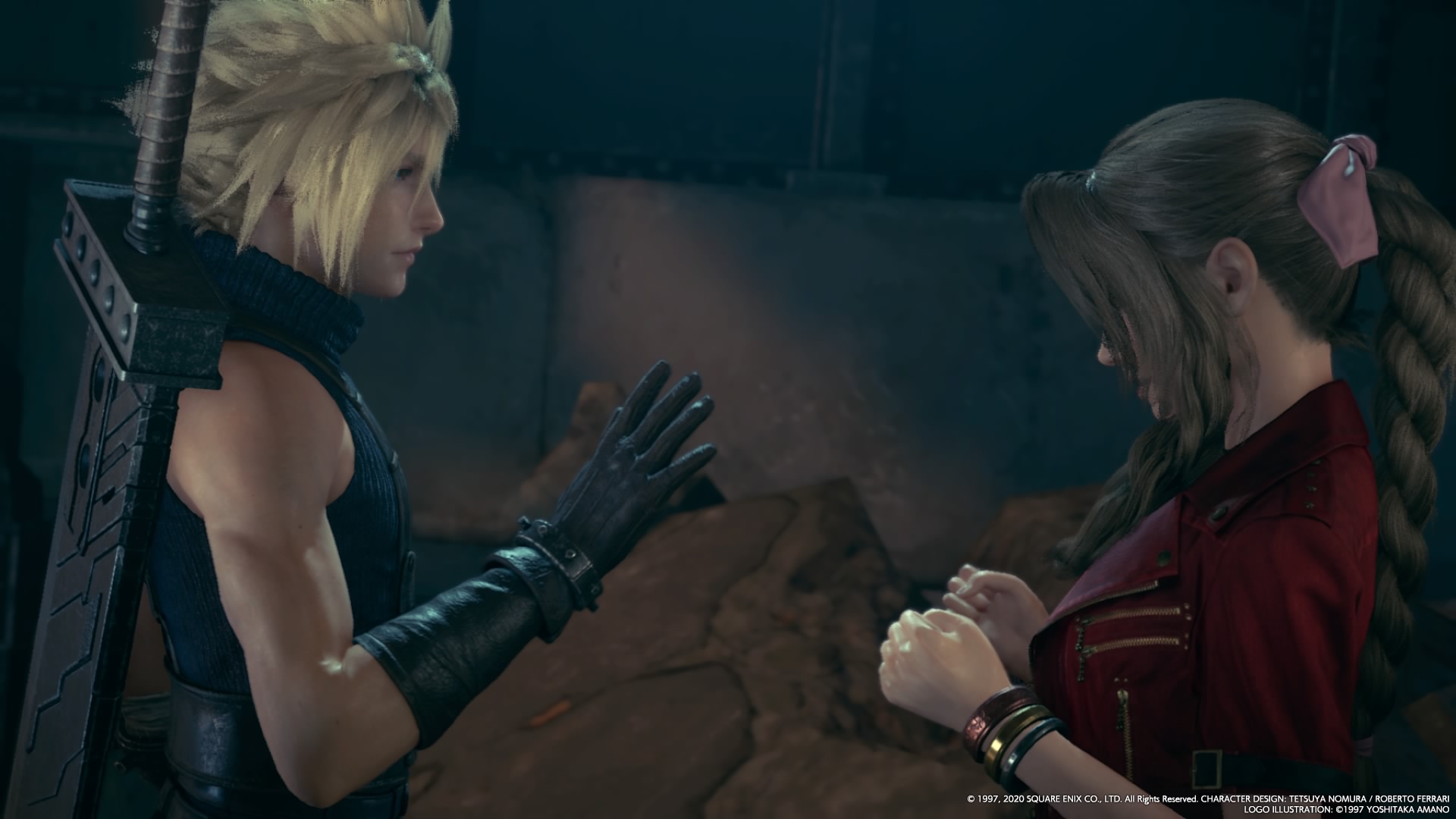
All in all, I feel that FFVIIR’s character model rendering is a small step up from the already awesome FFXV models, but conversely, a major step down in the detail, and texture quality of the environments. The Unreal 4 engine runs well on the PlayStation 4, but the Luminous Engine definitely produced greater visual results.
Final Fantasy VII Remake Ditches the Original’s Turn-Based Identity in Favor of a Polished Kingdom Hearts Approach to Combat
Final Fantasy VII Remake at times feels like a linear action-adventure game, rather than a traditional RPG. However, its action based combat, materia, weapon upgrade, and character progression systems reminded me that FFVIIR is an RPG, even it if is quite different from the original.
The combat system is action-based, but you can slow time in order to make traditional menu choices (item selection, Spells, Summons and Limit breaks if available). This feature brings the game’s combat closer to a turn-based approach as you can control the commands of the entire party. In fact, during the tougher battles it will be necessary to micro-manage the party’s actions in the heat of combat.
So, this take might irk some of the old-school purists, but I actually liked FFVIIR’s brand of combat. I feel that it is an improvement of FFXV’s battle system, and over Kingdom Heart’s more hectic take on combat.
Considering that we live in the era of the Witchers, the Horizon Zero Dawns, and the Zeldas, I am not entirely shocked that Square Enix has decided to stick with the action-based combat. At least, in FFVIIR’s case, almost every boss battle has an strategic component to it, and I saw the “Game Over” screen quite a few times (mainly from running out of healing items).
The difficulty, even on Normal was quite high, specially because for some odd design choice grinding wasn’t easy–or accessible–until I reached the Shinra Building. Enemies in the game world take too long to respawn, and when they do they do not provide enough EXP to make farming a viable option for most of the game. This was a bummer, and I found myself wishing for a “Random Encounter” mode of sorts.
Surprisingly, the Materia system is intact here, it is about as good a translation of it as I expected. Upgrading weapons is also a nice addition–I only had about three swords for Cloud in my inventory during my 29 hour play through–but even my starter buster sword was powerful enough at the end of the game to get the job done.
Limit Breaks work as they always did. Take punishment, and the limit break bar fills up, allowing your character to unleash a super powerful attack when it is full. The summons cannot be summoned at will, but during battles when the party member with the summon materia reached a critical state (low health), the Summon bar would quickly fill, allowing me to summon the mythical beast.
I only had Ifirit, and Shiva, as I didn’t spend time working for the one NPC that allowed me to gain the all important summon materias, but I found that the two summons were enough for me to complete the game.
Now, onto the side questing in the game. Final Fantasy VII Remake, quite possibly, features some of the blandest side quests that I have ever seen in any video game. It is clear that the only reason that the side-quests are even present in the game is for “padding” purposes. In other words Square Enix crammed a lot of unnecessary elements into the game’s gameplay, and story in order to extend the play time.
Having reviewed Assasin’s Creed: Valhalla just before writing this review, I have to admit that I found myself drowned in disappointment by how primitive Final Fantasy VII Remake’s world is by comparison. The quests range from finding cats, to hunting monsters, and finding items for NPCs.
FFXV was all about monster hunting, but its world was 1000x more engrossing that FFVIIR’s linear, and tunnel filled version of the Midgar slums. It doesn’t help that the game shuts you out from certain areas until the completion of the story when you can go back and replay any chapter at will.
Some mini-games like dart throwing, and yes, even the Andrea Dancing Rhythmic sequence are fun, but not fun enough to keep me coming back to them. Considering that Final Fantasy VII set a massive standard for the series (and JRPGs in general) with its vast amount of mini-games, and side quests, FFVIIR is a massive disappointment by comparison.
No Excuse for Not Making A Full Game
Except that Square Enix wants to sell the game in chunks, and financially milk the “Remake” in many installments. The more I played FFVIIR, the more I questioned how a game as linear, and as basic in so many areas could take such a long time to make.
Honestly, cut all of the unnecessary filler, long walks (the way up to Shinra’s Building felt eternal) and pointless action sequences (Roche anyone?) and Final Fantasy VII R is a 10-15 hour game at most. I have learned to not expect much from Nomura, but FFVIIR took 3-4 times a longer amount of time to make than AC: Valhalla, and it is many, MANY times the smaller, and less complex game.
I remember a time when the Final Fantasy series used to lead the charge in delivering epically large games with Final Fantasy VII being a prime example of this. Consequently, FFVIIR is a reminder of how far the series has fallen from grace, especially when stacked up against contemporary western games.
Square had a chance to create a special experience here, but instead chose to go the episodic route. Final Fantasy VII Remake feels like an over padded piece of a larger puzzle as a result of the game’s episodic nature. If Nomura, and Kitase couldn’t go beyond and above the call of duty for Square Enix’s most prized IP, then I wonder if the FF Series can ever get back to its 90s glory.
A Good, But Not ‘Final Fantasy VII’ Great Game
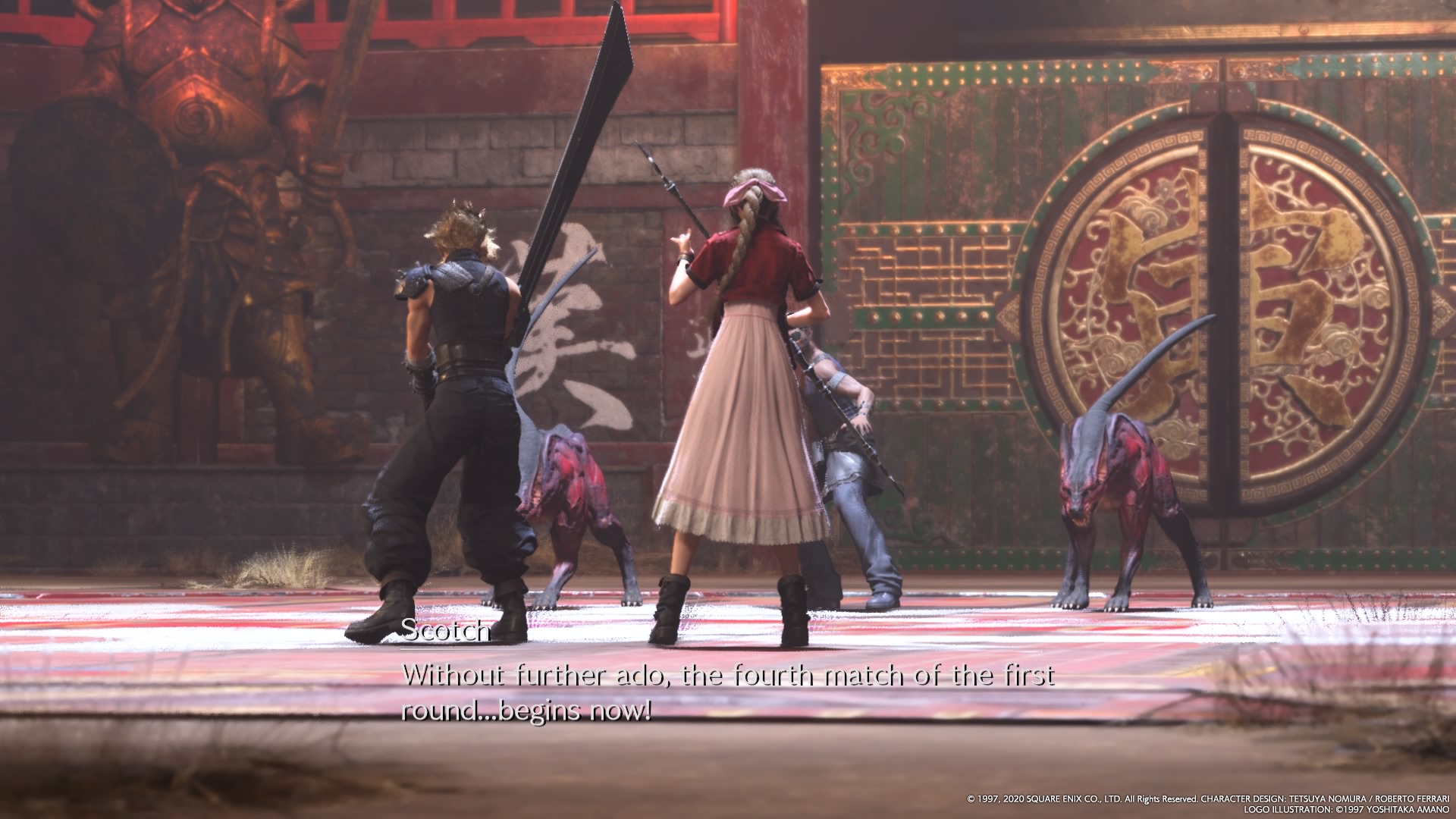
If you walk into FFVIIR expecting a faithful remake of the legendary original, you will walk away in disgust, and disappointment. You will shake your head at how Nomura could have botched a game whose framework was already great and set in stone. Conversely, approach FFVIIR as the weird sequel that it is, and you will find comfort (and salvation) from the irrational story in the game’s few brilliant nostalgia filled moments fueled by Uematsu’s music and our beloved 23 year old characters.
Final Fantasy VII Remake is not what it could have been, perhaps not even what it should have been. The way in which its storyline ends has the makings of a catastrophic train wreck waiting to happen. And yet, Nomura did at least pick my curiosity. I do want to see how the train wrecks in future episodes, as FFVIIR carries on its rails my most beloved video game characters.
Gameplay: 7.5
The combat is fantastic, but there are not enough opportunities to grind for most of the game. The game does a good job in implementing many of the original’s staples. The Materia, Limit Break, Summon, and Spell systems are all here intact.
World design is linear, and a bit bland. Hallways, tunnels, and alleyways make up the design of most of the game’s environments. Some mini games (such as the hand crane) are annoying and are unnecessary “padding” devices in order to lengthen the game’s play time.
FFVIIR, as a game, is truly archaic when compared to its cotemporary rivals.
Graphics: 8.0
The character models (at least the main ones) are worthy of a 9, but the environments that they traverse can look like HD versions of PlayStation 2 games at times. The texture work is poor, and considering how small and linear the levels are, I wonder how Square will deal with the game’s settings for the next episode, as I expect larger, more lively environments outside of Midgar.
The artwork is fantastic, however, and Nomura’s brilliance as an “action scene” director will convince many that FFVIIR looks much better than it actually does.
Music: 10
The music alone saved FFVIIR for me. Uematsu’s legendary compositions have never sounded better. It is a fantastic aural experience especially while playing with headphones. The voice acting is okay. I enjoyed Cloud, and Jessie’s voice acting. Aerith and Tifa’s are okay, but I think I preferred the sound of Aerith’s actress voice in Advent Children.
Story: 7.0
The Good: The Outline of the Original Story is here for the most part.
The Bad: Everything else. Apart from Jessie’s new found limelight, Final Fantasy VII adds illogical story changes in between important plot points. Some of the additions are there to extend play time, and for the most part they are uninspired. Other additions are there to reinforce the fact that the game takes place in an alternate timeline, and these changes can range from understandable, to highly irrational.
Hojo’s entire Shinra building section, for example, was a waste of a good 2-3 hours of playtime. This Hojo addition was not present in the original simply because it makes no sense within the context in which it takes place. But alas, it is here in FFVIIR because Square needed an excuse to charge a full price for an incomplete product.
Sephiroth is no longer a mysterious villain, and many of the most interesting plot points of the first game that took place hours beyond Midgar’s section of the story are unceremoniously revealed in FFVIIR. Most bizarre of all is the game’s ending which suggest that at least 3 different parallel timelines are created upon FFVIIR’s completion. Alternate timelines in stories are rarely a good thing.
Final Fantasy VII was a dark, and gritty Science Fiction/Fantasy tour de force that was deep, but easy to understand. FFVIIR is Science Fiction/Paranormal/Fantasy mess, that is easy to follow, but difficult to rationalize.
Replay: 6.0
Terribly bland side quests, uninspired level design, and a nonsensical storyline make replaying FFVIIR a difficult task after finishing the game once. The game is an incomplete part of a bigger work, and it feels like it.
Overall: 7.5
Final Fantasy VIIR is a good game, filled with nostalgic images, and sounds that at times make it seem like it is much better than it actually is. In the end the game falls extremely short of the greatness of Final Fantasy VII in 1997. Even today, if you look past the outdated visuals you will find that Final Fantasy VII is a much better RPG than the sequel that Square Enix has erroneously marketed as a remake.
Metacritic rated Final Fantasy VII Remake an 87.
Agree with the author? Couldn’t disagree more and are frothing at the mouth to tell him? Leave a comment here, on Facebook or send an email and make sure to follow Never Ending Realm on Facebook, Twitter, and YouTube!

(First of all, sorry regarding my english)
The difference of a Remaster vs Remake…
Remaster is the same game with better or improved graphics, and the remake is remaking a game, it can have changes or adding new content or story, and even change alot, even mechanics, still it has the base of the game.
From the first words that you have already a negativity and underevaluation for the remake of FF7. Still the game wasnt a 6 on the replay, and generally it has much higher love from gamers community in general (9 to be accurate). Why you started by going against the “Remake” and specially not giving a correct definition… got you this poorly review. A game that has the last of the technology in graphic, performance and visuals is a massive investment and improvement… and you say if it was the original… you need to be realistic, if you payed attention to the beginning of developing, they told us it wasnt and the first part was Midgar. Again… alot lacking in the research from your part.
You have potencial but… if you had the imparcial factor could have been a much better review.
Browsing this again and wondering how much more biased you could be. The author of the review has been waiting for this since before the PS3/720p tech demo and quite correct in saying that this is neither a remaster nor a remake. It is a sequel advertised as an HD remake. The original game/story happens before this game and is unchanged. I actually wonder if you played the original game near its release as you’re a bit silly imo and question if you played FF7R as well. FF7 on PS1 still exists are a separate world now, apart from FF7R-1, with the potential for crossovers and at least several more parts left. A remake of anything replaces it; it does not sit adjacent like Star Trek Generations.
Great read! Interesting to note that EGM gave FFVII a 9.5/10 when it was released, and a 6/10 now to FFVIIR.
100% agreed, they should called it FF VII spin-off, I hate what Nomura has done to the story…